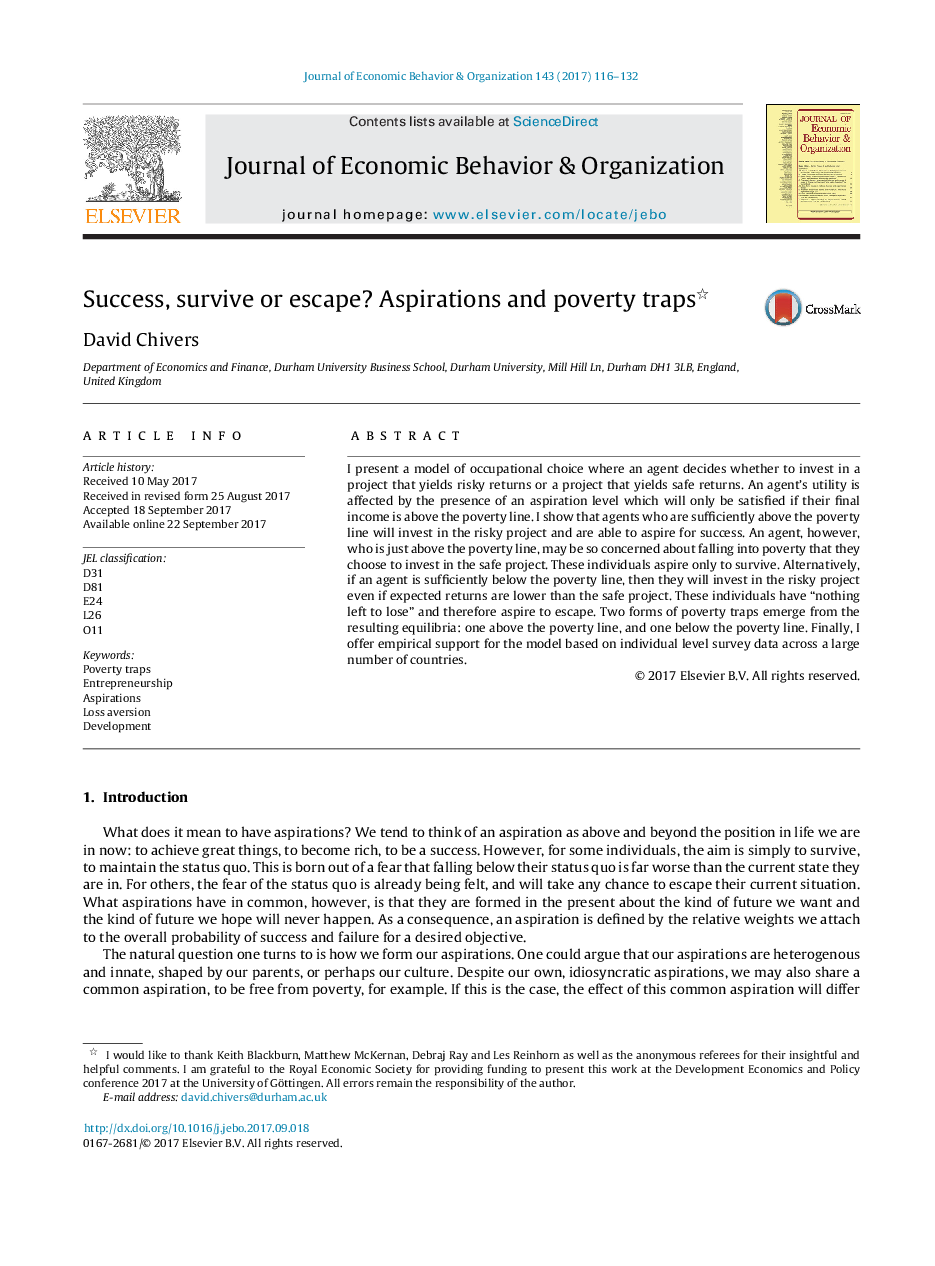| Article ID | Journal | Published Year | Pages | File Type |
|---|---|---|---|---|
| 5034416 | Journal of Economic Behavior & Organization | 2017 | 17 Pages |
Abstract
I present a model of occupational choice where an agent decides whether to invest in a project that yields risky returns or a project that yields safe returns. An agent's utility is affected by the presence of an aspiration level which will only be satisfied if their final income is above the poverty line. I show that agents who are sufficiently above the poverty line will invest in the risky project and are able to aspire for success. An agent, however, who is just above the poverty line, may be so concerned about falling into poverty that they choose to invest in the safe project. These individuals aspire only to survive. Alternatively, if an agent is sufficiently below the poverty line, then they will invest in the risky project even if expected returns are lower than the safe project. These individuals have “nothing left to lose” and therefore aspire to escape. Two forms of poverty traps emerge from the resulting equilibria: one above the poverty line, and one below the poverty line. Finally, I offer empirical support for the model based on individual level survey data across a large number of countries.
Related Topics
Social Sciences and Humanities
Economics, Econometrics and Finance
Economics and Econometrics
Authors
David Chivers,
